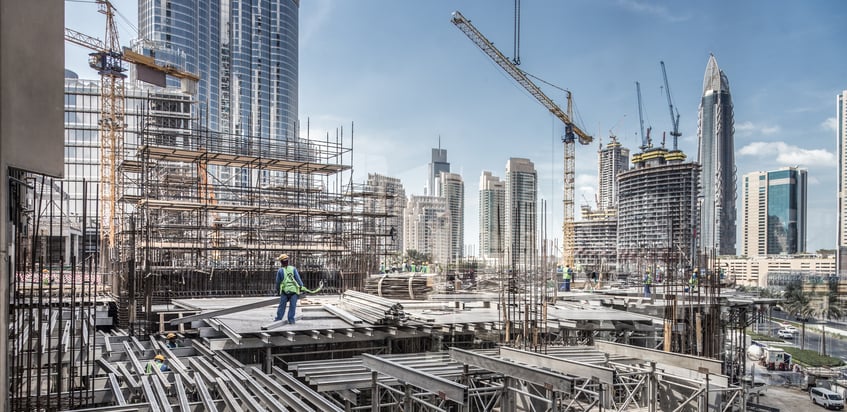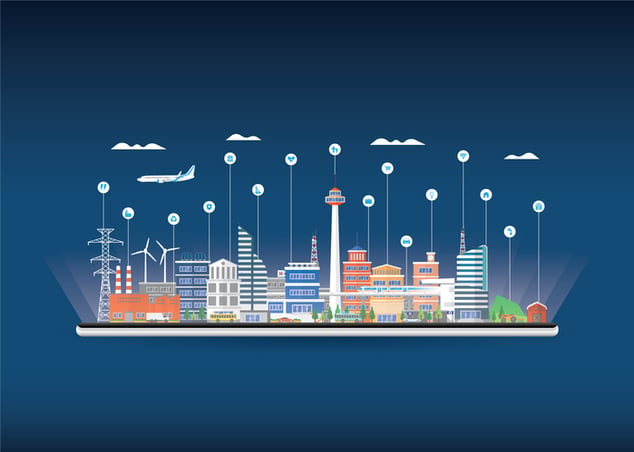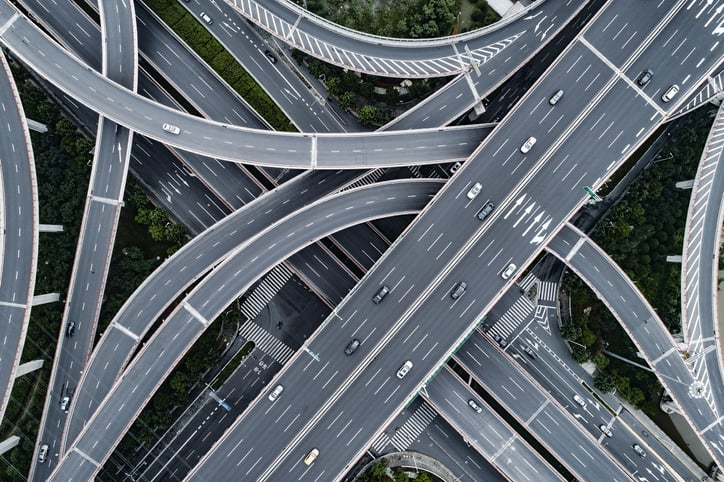
Editorial Note: This article was brought to you courtesy of Rose Morrison, managing editor of Renovted.com.
In 2016, the United Nations estimated that 68% of the world’s population would live in urban areas by 2050 – a significant rise from the current 55%. The population is also expected to reach 10 billion souls by the same year. Additionally, with a looming threat of climate crisis and a collective need to reduce the world’s carbon footprint, it becomes easier to understand the need for updates and upgrades to these sprawling urban centers as they become megacities.
Researchers define megacities as any large city with more than 10 million people. As of 2022, 34 cities meet the population criteria to be considered megacities, including Tokyo, Delhi, Sao Paulo, Mexico City, Cairo, and New York.
Countries are working to create urban infrastructures where people can thrive. How will President Biden’s infrastructure bill impact the development of smart cities?
Defining a Smart City
First, what is a smart city? 
There are a lot of different criteria that could define a city as smart. According to IBM, a smart city is “one that makes optimal use of all the interconnected information available today to better understand and control its operations and optimize the use of limited resources.”
That broad definition can include various things, from traffic control to weather monitoring, water testing, and more, networked into a single smart system that collects data and makes informed decisions about how to proceed. These decisions can come autonomously or with the assistance of civil engineers and city workers.
The ultimate goal of a smart city is to improve the quality of life for everyone. Ideally, these cities will become more sustainable, utilize more green energy, reduce traffic problems, and more if they have the funding to get off the ground.
They may be theory now, but smart cities have the potential to shape the future of urban planning – something the sector sorely needs in preparation for some decades of continual growth.
What Makes a City Smart?
Smart city technology is so new that there is no singular list of technologies that might appear in a smart city. Things we might see as these urban centers involve include:
- Traffic Monitoring: Real-time traffic monitoring algorithms can observe traffic patterns and change traffic signal times to optimize traffic movement throughout the city. As self-driving cars become more common, this monitoring and integration infrastructure has the potential to become more streamlined as the vehicles communicate with each other and directly with the city.
- Green Energy: One of the most common arguments for developing smart cities is that they will be more sustainable and better for the environment. Among other things, this requires the adoption of green energy. Cities can opt for the type of green infrastructure that works best for their location, but overcoming our reliance on fossil fuels is essential for creating the smart cities of the future.
- Improved City Services: Everything from waste management to fire services, city planning, and more can all be improved by introducing smart technologies. GPS allows emergency medical services to dispatch aid directly to the victim’s location, plot the optimal route to their location and, if integrated with the traffic monitoring system mentioned above, even change traffic lights to clear a path for the ambulance.
- Citizen Integration: Barcelona is already on the ball when it comes to incorporating information provided by its citizenry. Residents can download the Búsita Ciutadana app and report any information they deem relevant in the city – from broken traffic lights to overflowing dumpsters – directly to the city council so they can address it.
- Air and Water Quality Monitoring: The more crowded cities become, the harder it becomes to keep the air and water clean. IoT sensors scattered around the city can monitor air and water quality, sending necessary alerts to city officials. From there, city planners can take steps to reduce the impact on air and water supplies.
- Temperature Monitoring: Climate change has created a unique threat in urban centers: heat. Replacing natural land cover with concrete, steel, and glass allows cities to get much hotter than the surrounding landscape, an occurrence known as the urban heat island effect. Temperature monitoring will make it easier to keep people safe as heatwaves become more frequent.
- Public Health Monitoring: The COVID-19 pandemic taught us how important public health information is, especially when you’re trying to quell the spread of a contagious virus. Smart cities can use information obtained from citizens to help track public health trends. It may not be as accurate as direct contact tracing. Still, it does provide at least some data for public health officials to work with if those impacted by a pandemic are as reluctant to share information as they were during COVID-19.
- Earthquake Detection: Earthquakes are a fact of life in many parts of the world. While it’s impossible to prevent them, early detection can allow people to prepare themselves for the inevitable shake. Istanbul, a megacity with a population of more than 14 million, is at significant risk for earthquakes and uses a network of more than 100 strong-motion sensor stations to detect the early signs of an impending earthquake.
- Robotics: Robotics has a variety of applications in smart cities, from maintenance and deliveries to healthcare assistants. Most hospitals have at least one robotic surgery arm and some rely on delivery robots to move medications and other supplies around the facility.
This list isn’t exhaustive, but it can help paint a clearer picture of the kind of technologies we can expect to see in the smart cities of the future.
Exploring the Infrastructure Bill
In 2021, President Biden signed a massive infrastructure bill into law worth $1 trillion. While the final bill was smaller than his initial $2.3 trillion proposals, it still offers billions of dollars to support new growth and funding repairs and reinforcements for thousands of miles of highways, bridges, powerlines, and more that desperately need work.

The plan includes:
- $110 billion for roads and bridges
- $66 billion for railroads
- $65 billion for power infrastructure
- $65 billion for broadband
- $55 billion for water
- $50 billion for resilience funding (focus on cybersecurity and climate change)
- $39 billion for public transportation
- $25 billion for airports
- $21 billion or environmental cleanup
- $17 billion for port infrastructure, via the Army Corps of Engineers
- $11 billion for highway and infrastructure safety
- $8 billion for water infrastructure in the western region
- $7.5 billion for EV charging stations
- $7.5 billion for electric school buses
The bill also includes a grant program worth $550 million over five years, specifically developing the technologies necessary to make smart cities work. The funding for broadband support is primarily designed to improve access to internet service providers in underserviced parts of the country. Still, it can also be applied to the new broadband technologies and infrastructure necessary to support smart cities.
A lot of the additional allocations for childcare, college access, and more were cut to help the bill move through Congress without too much contestation from either side of the aisle.
It isn’t the perfect solution, nor will it fully fund the upgrades and new technologies necessary to convert existing cities – especially megacities – into smart cities. Still, it can help lay the foundation for this growth moving forward.
Building a Timeline
Whether you’re converting an existing city into a smart city or starting from the ground up, it’s not a goal you will achieve overnight.
City planners need to start with short-term goals they can achieve in two to three years. These goals should include tasks like:
- Future-proofing the city’s infrastructure
- Setting up procurement strategies
- Testing the waters with the citizenry
Like with smart homes, building a smart city isn’t just about buying all the new technologies. You also need to know about the long-term prospects of getting your investment back.
Getting the residents of the city involved is just as important. Many of these applications, like Barcelona’s reporting app, require the participation of the people who call the city home.
Medium-term goals should fall within the 5- to 10-year time frame. You’ve outlined all your solutions and come up with plans to implement them. Now is the time to start putting those plans into action. It’s important to be flexible here. 10 years is a long time and things might change during the intervening years. Make sure you’re adaptable and willing to make any necessary changes to make these projects succeed.
The work doesn’t end once you reach the decade mark. If the city is still thriving after 10 years, it’s safe to shift your focus toward ensuring the city remains a sustainable home for its residents. Revisit the strategies you established at the beginning of the project and see if they still serve the greater good or need to be traded for something new.
Looking Toward the Future
As more people move from rural areas into cities and more megacities begin popping up worldwide, smart cities will become a necessity. This technology aims to help keep people safe and healthy while preventing these urban centers from doing more damage to the environment. Smart cities will likely become more common in the next decade or two as city planners begin to adopt the technologies they’re going to need to bring their home cities into the future.
This is a guest post written by Rose Morrison, managing editor of Renovated.com